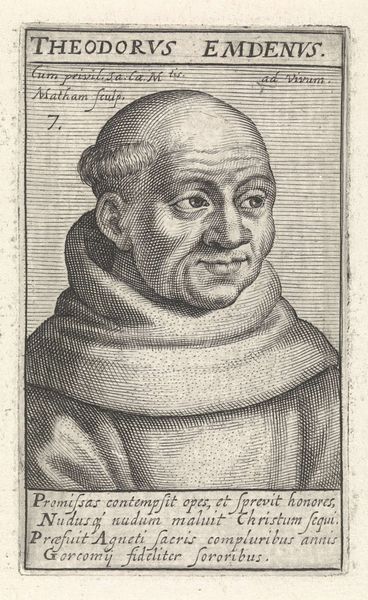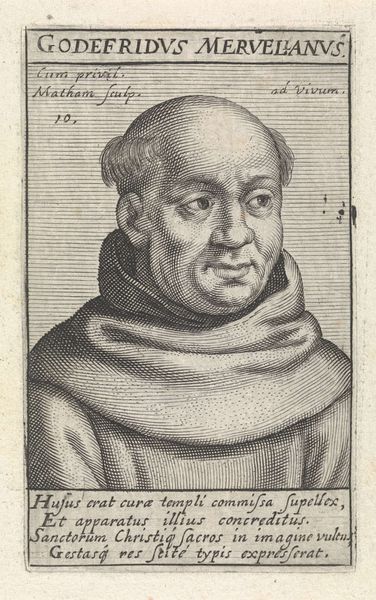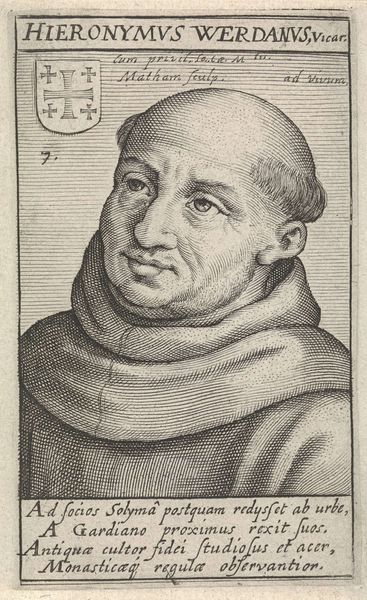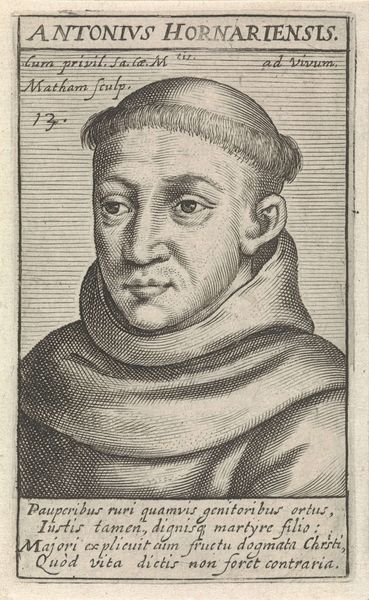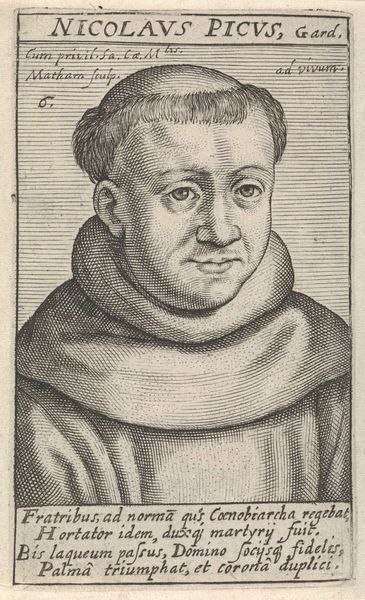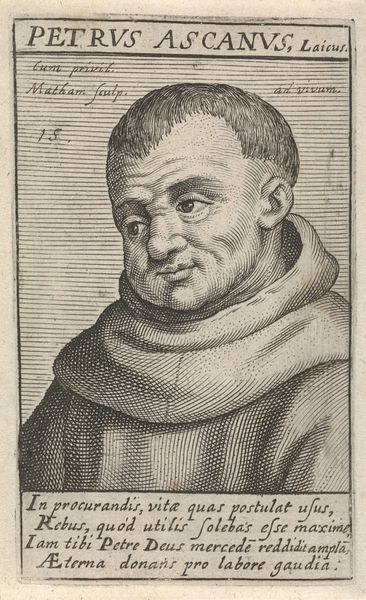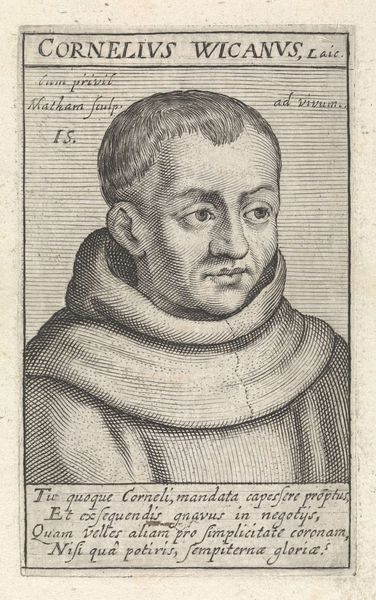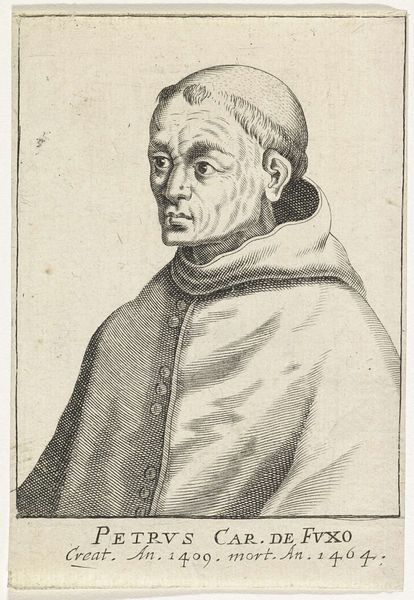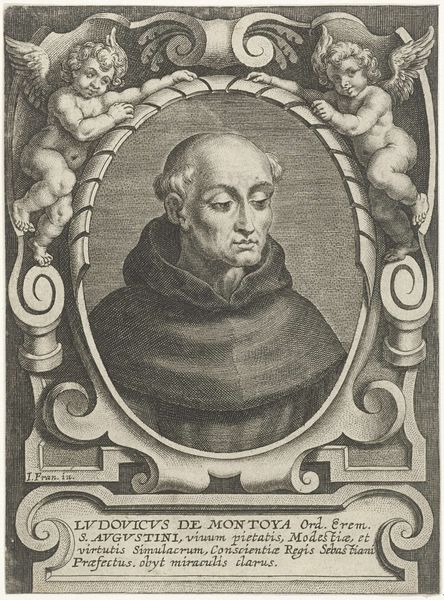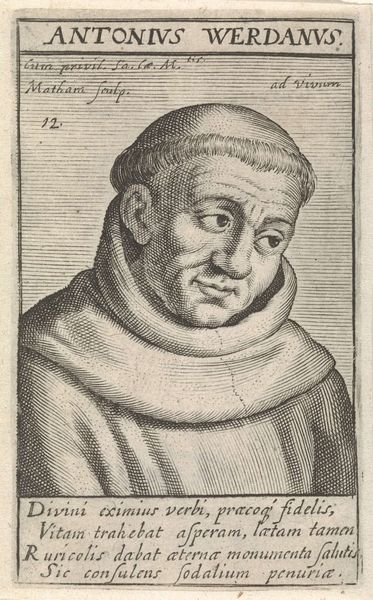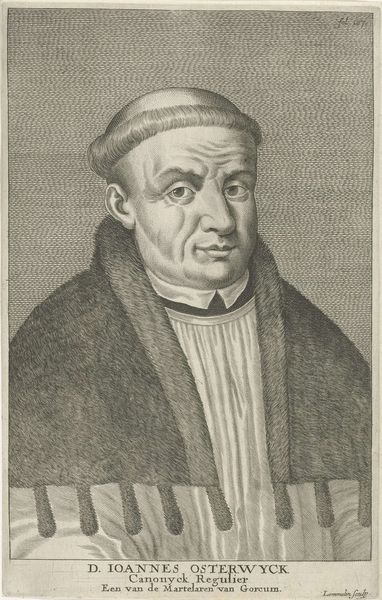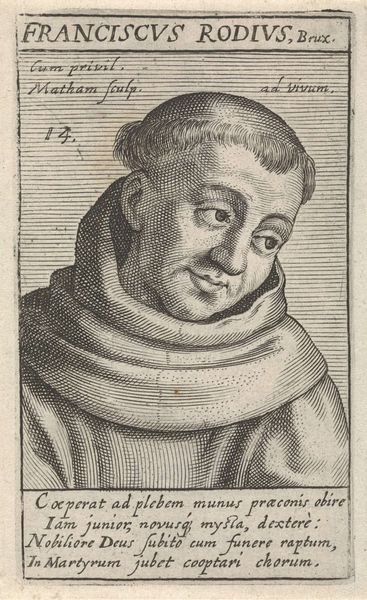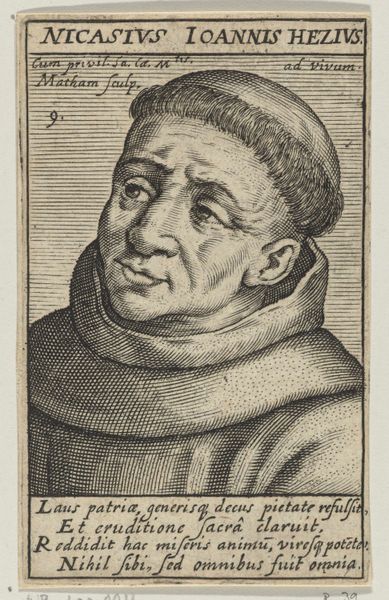
print, engraving
#
portrait
#
baroque
# print
#
old engraving style
#
figuration
#
line
#
engraving
Dimensions: height 98 mm, width 60 mm
Copyright: Rijks Museum: Open Domain
Curator: Looking at this engraving, "Portret van H. Willehad van Denemarken," made by Jacob Matham around 1617-1618, presently housed at the Rijksmuseum, what immediately strikes you? Editor: The density of lines! The artist meticulously layered engravings to define the contours of the face, creating a really tactile impression despite the flatness of the print. Curator: Precisely. This work epitomizes the craftsmanship inherent in 17th-century printmaking. Consider the economic context: engravings like this would have served as relatively affordable and reproducible means to disseminate imagery. How do you think it influenced his perception? Editor: It's interesting how portraiture intersects with institutional power. Hagiography was definitely crucial in building up narratives around saints and other religious leaders, right? The Baroque style often served these purposes. Curator: Indeed. Matham cleverly uses linear patterns to describe Willehad, from his somewhat melancholic eyes down to his draped religious robe. The text at the bottom reinforces Willehad’s persona with a short epitaph. Think about what that means to produce, buy and display. Editor: And in this piece you see a merging of the material realities – the paper, the ink, the labor-intensive engraving process – with the creation of an image intended to build authority. One relies upon the other. Curator: The production relies upon access to specialized workshops, commissioned to build influence. This helps the Catholic traditions survive by reaching people. The relatively easy mass print distribution must have had significant impact. Editor: The very act of making prints and reproducing them on paper changed access. Even the shift to cheaper paper stock surely altered access. Curator: Absolutely. It democratized it...slightly, let's say, relative to painted portraits only accessible to elite circles. Any thoughts? Editor: This piece shows us how visual culture is not just about artistry but about power relations made tangible. It's a compelling reminder of art's broader role in history. Curator: A point well observed. The historical importance and material conditions behind prints provide layers beyond merely admiring line work, ultimately making the subject even richer.
Comments
No comments
Be the first to comment and join the conversation on the ultimate creative platform.
